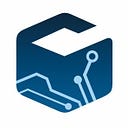Upgrading and Maintenance Showdown: Laravel vs Symfony
Upgrading and Maintenance Showdown: Laravel vs Symfony
Introduction:
In the ever-evolving landscape of web development, choosing the right framework and right web development company is crucial for the success of a project. Laravel and Symfony stand out as two of the most popular PHP frameworks, each with its strengths and unique features. In this blog post, we will delve into the realm of upgrading and maintenance, comparing the approaches of Laravel and Symfony to help developers make informed decisions.
Upgrading in Laravel:
Laravel, known for its elegant syntax and developer-friendly environment, has gained widespread popularity for building robust web applications. When it comes to upgrading, Laravel provides a smooth and straightforward process. The framework’s documentation is comprehensive, offering clear guidelines for upgrading between versions.
Laravel’s Artisan command-line tool simplifies the upgrade process, automating many tasks and minimizing manual intervention. Developers can utilize tools like Laravel Shift for a seamless transition between major versions, reducing the risk of breaking changes.
The Laravel ecosystem also boasts a vast array of packages, ensuring compatibility and smooth integration during the upgrade process. The community actively contributes to keeping packages up-to-date, fostering a collaborative environment for developers.
Maintenance in Laravel:
Maintenance is an integral part of any web application’s lifecycle. Laravel’s expressive syntax and built-in features make ongoing maintenance a breeze. The framework’s modular structure allows developers to organize code efficiently, making it easier to locate and fix issues.
Additionally, Laravel’s Eloquent ORM (Object-Relational Mapping) simplifies database interactions, streamlining database-related maintenance tasks. The built-in task scheduler and queue system further enhance the framework’s capabilities for background processing and task automation.
Laravel’s community actively supports long-term support (LTS) versions, ensuring security updates and patches for an extended period. This commitment to LTS versions provides developers with a stable foundation for maintaining their applications over time.
Upgrading in Symfony:
Symfony, known for its flexibility and scalability, is another powerhouse in the PHP framework space. Symfony’s approach to upgrading is well-documented, with clear release notes guiding developers through the process. While Symfony’s upgrade process may involve more manual steps compared to Laravel, the framework’s transparency aids developers in understanding and addressing changes.
Symfony’s use of semantic versioning helps developers anticipate the impact of updates on their applications. The SensioLabs Security Checker tool is a valuable asset for checking and addressing security vulnerabilities during the upgrade process.
Maintenance in Symfony:
Symfony’s modular architecture promotes clean code separation, making maintenance tasks more manageable. The framework’s reliance on components allows developers to update specific parts of their applications independently, minimizing the risk of unintended side effects.
Symfony’s robust testing tools, such as PHPUnit, facilitate the creation of comprehensive test suites. These tests not only ensure the reliability of the application but also simplify the identification of potential issues during maintenance.
Like Laravel, Symfony benefits from a vibrant community that actively contributes to the framework’s ecosystem. Regular releases and long-term support for specific versions provide developers with a stable foundation for maintaining Symfony applications over the long haul.
Conclusion:
In the Laravel vs Symfony showdown for upgrading and maintenance, both frameworks exhibit strengths that cater to the needs of diverse projects. Laravel’s emphasis on developer-friendly tools and automation streamlines the upgrade process, while Symfony’s modular architecture and testing tools enhance maintainability.
Ultimately, the choice between Laravel and Symfony depends on the specific requirements of the project and the preferences of the development team. Whether it’s the elegance of Laravel or the flexibility of Symfony, both frameworks empower developers to create and maintain robust web applications efficiently.
